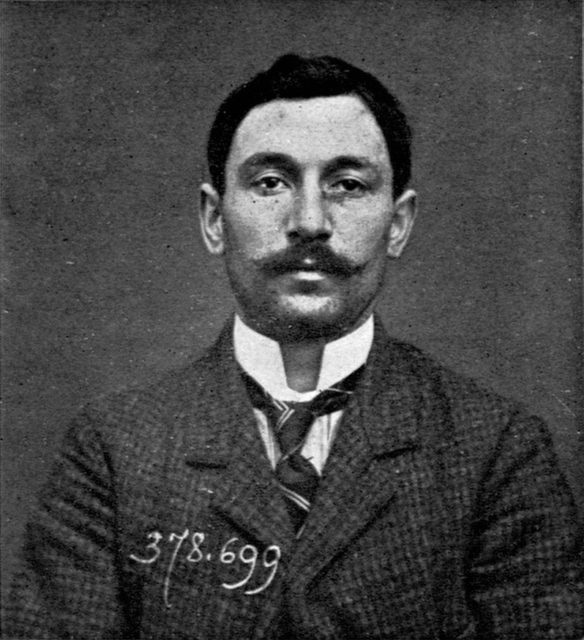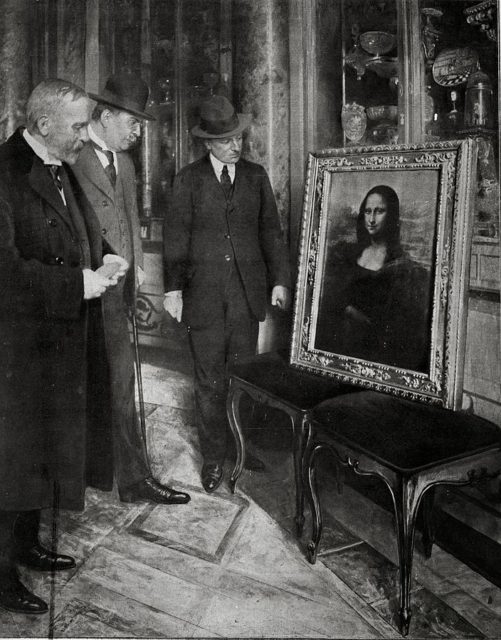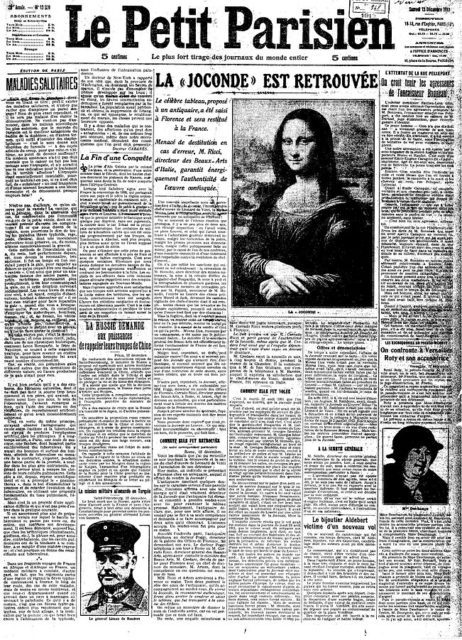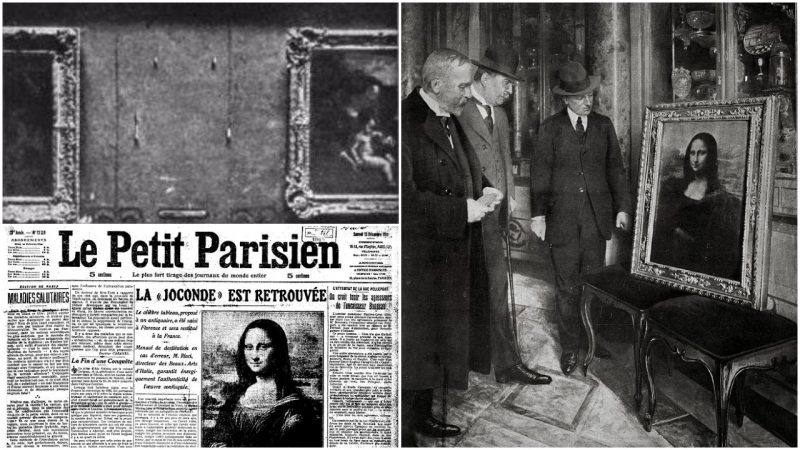Mona Lisa or La Gioconda, by far is “the best known, the most visited, the most written about, the most sung about, the most parodied work of art in the world”. Period.
The half-length portrait of Lisa Gherardini, done by the Italian Renaissance artist Leonardo da Vinci, also comes with a rich history of casualties. The most notorious one happened on 21 August 1911, when the painting was stolen.
It was the French painter, Louis Béroud who had come to The Louvre the following day and saw that the painting was strangely missing. As he needed to sketch his Mona Lisa au Louvre, he had asked the guards for the painting, but they supposed that it was being photographed for some advertising of the museum.
Louis returned to the Mona Lisa section a couple of hours later, only to find that the famous piece was still missing from the four iron pegs where it was meant to stand. Mona Lisa was indeed stolen. The Louvre closed down for a whole week, and an investigation was opened at once.

The police first thought of an artist named Géry Piéret who had a history of stealing from the Louvre. The investigators could not find Piéret in town, and so they went to his employer, Guillaume Apollinaire. The French poet and forefather of Surrealism was made a suspect because of previous repeated public statements that the Louvre should be burnt down. He was arrested and imprisoned, and his friend Picasso was made an unlucky victim of guilt by association. The Spanish painter was under suspicion as, in the past, he was unfortunate enough to purchase some Iberian stone heads from Piéret, completely unaware that Piéret had previously stolen the items from the museum. Both Picasso and Apollinaire were clear of all charges later on.
The real thief was found two years later; it was Vincenzo Peruggia, who worked at the Louvre. Italian-born, Peruggia carried out what has been described as the greatest art theft of the 20th century. It was almost like a thriller episode, as he had stolen da Vinci’s masterpiece during regular work hours at the museum, hiding in a broom closet until after hours, and walking out with it hidden under his coat. As an Italian patriot, Vincenzo believed that the painting should have been returned for display in an Italian museum. According to the investigations, Peruggia was possibly motivated to steal the painting because of a friend who owned copies of the original. Supposedly, the copies would dramatically raise their price if the painting had gone missing.

In 1932, a newspaper story published in the Saturday Evening Post claimed that the mastermind of the Mona Lisa theft had been the Argentine, Eduardo de Valfierno, who allegedly had paid several men, including Peruggia, to steal the treasured painting. According to the story, Valfierno had commissioned the French art restorer and forger, Yves Chaudron to make six copies of the Mona Lisa, which were to be shipped and sold in the States.
Nevertheless, the original Mona Lisa had remained in Europe, safely stored in Peruggia’s apartment. He was caught after attempting to sell the painting to the directors of the Uffizi Gallery in Florence. The painting was in fact exhibited at the Italian Gallery for little more than two weeks, after which, it was returned to the Louvre on 4 January 1914.

Peruggia was charged six months in prison for the theft but was saluted for his patriotism in his native country. Thanks to him, Mona Lisa became really famous as well. Before that, the Renaissance piece remained little known outside art circles.
More scandals occurred around the painting in the decades following. In 1956, part of Mona Lisa was damaged after a vandal threw acid at it. A speck of pigment near Mona Lisa’s left elbow was also damaged on 30 December that same year, after a rock was thrown at it, but the damage was quickly restored.
In 1974, when the painting was displayed at a guest exhibition at the Tokyo National Museum, a woman upset by the museum’s policy for disabled people, sprayed it with red paint. And in 2009, a Russian woman, displeased as she was not issued a French citizenship, threw a teacup purchased at the Louvre. Luckily, for these two latter incidents, the famous painting remained undamaged, being protected by bulletproof glass.
